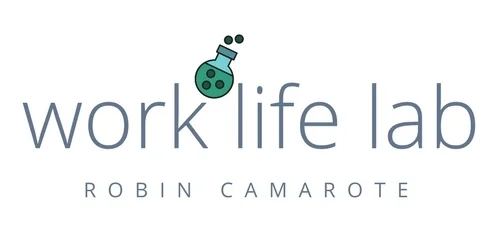We all want impact. It is as fundamental to being human as our basic need for comfort and connection. When we’re feeling effective and seeing results, we’re high. Conversely, when our ability to effect change at work ebbs—as it does from time to time—we get restless and even question our fit, our purpose, and whether it’s all worth it.
To have professional impact and see our ideas take off, two essential conditions must exist:
1. A quality idea
2. Support from our leadership.
Often, the challenge isn’t hatching the idea. It’s getting it off the ground. Sometimes the greatest hurdle is right in front of us: our boss, our leadership. Our leaders, by definition, question goals and objectives—to approve the time and money to be invested in achieving them and, ultimately, to support or squash the transition from “I have an idea” to its reality.
The interesting part of this challenge is not that our bosses are out-of-touch and intent on defending the status quo as the stereotype might suggest. In fact, they’re often as eager to see positive changes as we are. The decisions on which problems to tackle first and how to solve them are what creates friction in our workplaces.
Because our bosses’ role is to cheer, guide, and control, you’ll need to get them onboard to bring your best ideas forward. Passive approval leading to an “okay, fine” from our bosses is not enough. You want—and ultimately need—more than that knowing that you’ll hit bumps along the way. Instead, you want a “Yes!” backed by enthusiasm that comes from a place of real buy-in.
Because we can’t be the sole developers and implementers of our ideas, convincing leadership to get onboard with our proposed ideas is the first step in making an impact and creating a career with a body of work that matters. Without their support, our good ideas and intentions may be stuffed down further on our “to do” lists, put off, or forgotten.
Many of us work under a broad assumption that if our idea is good enough, it’ll sell itself. Any plans we do make to build senior-level buy-in for that idea tend to be vague and optimistic in terms of the time and effort required to bring key leaders along. We’re then frustrated when fragile new initiatives are squashed or canceled because they lacked needed leadership support.
It is curious to me that we don’t typically treat building leadership buy-in as something that benefits from a defined process. Why not? My guess is that we have traditionally viewed buy-in as something highly specific to the individual leader and the relationship we have with that individual. In other words, the buy-in process is so unique and nuanced that any effort to document it wouldn’t apply to enough people in a broad range of environments and situations to be worth it. Under this view, our ability to convince our boss to follow us is dependent on undefinable, intangible variables, such as how much they like us personally, how much we have in common, how open minded they are as people, or what great sales people we might be.
In my experience and after talking with dozens of colleagues, clients, and leaders on this topic, I have found that we—as a workforce-- have much more common challenges when building leadership buy-in than previously thought. More good news is that most of us have leaders who are highly amenable to being approached—if we approach them in the right way—and who are engaged in finding fresh ideas and new solutions.
To effectively build understanding and gain buy-in to get our leaders to follow us, we have to start with the solution. This might feel a bit backwards because nearly every other workplace process—technology innovation, program development, or conceptual design for example—all start with understanding the problem and end with the solution. This leader followership process picks up precisely where those others leave off.
So, what do you need to do to achieve that seemingly elusive buy-in from your leaders? It turns out that a couple of concrete actions yield a much greater chance of success. Buy-in starts by glancing inward and evaluating your mindset and perspective. In Flock, Getting Leaders to Follow you can read more about how to toss out the generic process prescriptions and instead create an “ask” that focuses on the anticipated greater good. It is this approach that will yield true leadership support and ensure that your best ideas are more than just heard.




